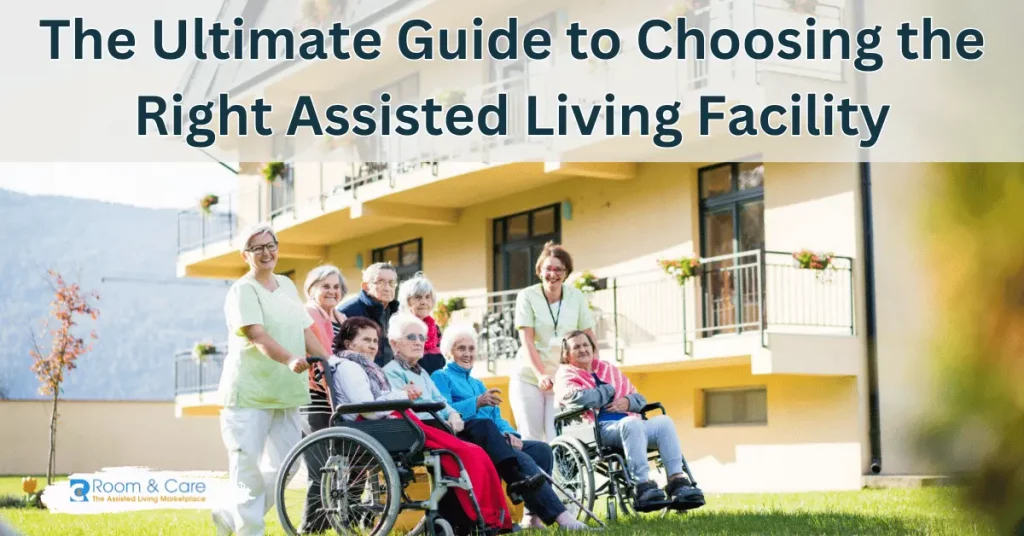

Choosing the right assisted living facility is a significant decision for seniors and their families. It’s a process that balances many factors, including care needs, personal preferences, and financial considerations. In the United States, the number of assisted living facilities has grown to over 28,000, housing nearly 1 million residents. This growth reflects an increasing demand for environments that not only ensure safety and medical care but also promote social interaction and independence. This comprehensive guide aims to provide you with the essential information and practical steps needed to make a well-informed decision that aligns with your loved one’s needs and preferences.
Assisted living facilities are designed for individuals who require assistance with daily activities such as bathing, dressing, and medication management but do not need the intensive care provided by nursing homes. These facilities offer a unique blend of independence and support, focusing on providing a community atmosphere that fosters both privacy and social engagement.
Assisted living plays a crucial role in the spectrum of elder care. It bridges the gap between independent living and more intensive nursing care. Unlike nursing homes, which provide 24-hour medical care, assisted living facilities offer a level of care that maintains as much independence as possible. As of 2020, about 52% of assisted living residents are 85 years old or older, and nearly 77% of residents require assistance with bathing, while 68% need help with dressing.
The services offered in these facilities typically include meals, housekeeping, laundry, transportation, and various recreational and social activities. Amenities can range from basic comfort to luxury options, encompassing things like fitness centers, libraries, and on-site beauty salons. The goal is to provide a comfortable, engaging living environment tailored to the needs of seniors.

Assessing the level of care required is the first and most crucial step in finding the right facility. This involves understanding the specific assistance your loved one needs. For instance, approximately 40% of assisted living residents receive help with three or more activities of daily living. Consider factors like mobility issues, cognitive health, and any chronic conditions that require regular monitoring or medication.
In addition to care needs, personal preferences and lifestyle are paramount. This includes considering the type of social environment your loved one thrives in, their hobbies, dietary preferences, and religious or cultural considerations. For example, someone who enjoys social activities might prefer a facility with a vibrant community calendar and communal spaces.
It’s also important to anticipate potential future needs. On average, residents live in an assisted living facility for about 22 months, and during this time, their needs may change. A facility that offers a range of care options or is part of a larger community with different levels of care can provide peace of mind for future transitions.
Finding the right assisted living facility requires a methodical approach. Begin by identifying what is most important for your loved one’s care and happiness. Then, use various resources to create a list of potential facilities. One valuable resource is Room & Care, a platform that allows you to find and book assisted living directly, simplifying your search process. By using such resources, you can access detailed information about different facilities, compare options, and make informed decisions.
The internet is a powerful tool in your search. Look for websites that offer comprehensive listings of assisted living facilities along with reviews and ratings from residents or their families. Remember, about 87% of seniors and their families turn to online reviews when researching senior care options. These reviews can provide insights into the experiences of others, helping you understand the pros and cons of each facility.
In addition to online resources, personal recommendations from friends, family, or healthcare professionals can be invaluable. They can provide firsthand accounts and honest feedback about their experiences.
When evaluating assisted living options, several key factors should guide your decision.
The facility’s location is crucial for ensuring that family and friends can visit easily, which is vital for the resident’s well-being. A conveniently located facility can also ensure easy access to local healthcare services and community resources.
One unique feature of Room & Care is its approach to bypassing middlemen. This direct booking model allows you to connect directly with facilities, which can often result in cost savings. Since the average assisted living referral fee can be as high as $4,500, direct booking platforms like Room & Care can be financially advantageous.
Consider the size of the facility and the types of services it offers. Some seniors may prefer a smaller, more intimate setting, while others may thrive in a larger community with more social opportunities.

Quality of care is perhaps the most critical factor in choosing an assisted living facility.
Look for facilities that offer robust health and wellness programs. These programs should cater to both physical health, through exercise and nutrition, and mental well-being, through social activities and mental stimulation. Facilities that prioritize holistic wellness typically see higher satisfaction rates among residents.
The qualifications and training of the staff are indicative of the quality of care provided. A high staff-to-resident ratio and ongoing staff training are important factors. The best facilities often have specialized staff for different needs, such as memory care.
Evaluate the facility’s emergency preparedness, including their response plans for medical emergencies and natural disasters. This aspect of care is crucial for ensuring the safety and well-being of residents at all times.
Understanding and planning for the financial aspect of assisted living is critical.
The costs can vary widely based on location, facility size, and the level of care required. As of 2023, the average monthly cost for assisted living in the United States ranges from $4,000 to $6,000. It’s important to get a clear understanding of what is included in these costs and what might be additional.
Explore various payment options, such as private pay, long-term care insurance, and potential benefits like Veterans’ benefits. Some states also offer Medicaid waivers that can help cover the costs of assisted living for eligible individuals.
Early planning and budgeting can alleviate financial stress. Consider speaking with a financial advisor who specializes in elder care to explore the best options for your situation.
Visiting facilities is an essential step in the decision-making process.
Pay attention to your first impressions. Is the facility clean and well-maintained? Is the atmosphere welcoming and comfortable?
Observe the interactions between staff and residents. Are they respectful and caring? Also, take note of the activities available to residents and whether they align with your loved one’s interests.
Prepare a list of questions to ask during your visit, including inquiries about staff qualifications, healthcare services, emergency procedures, and how they handle changing care needs.
Moving to an assisted living facility is a significant life change for seniors.
Offer emotional support to your loved one. Discuss their feelings about the move and reassure them of your continued involvement in their life.
Plan the move carefully, considering what items to bring and how to personalize the new living space. This can help make the transition smoother and more comfortable.
Stay involved in your loved one’s life after the move. Regular visits, phone calls, and participation in facility activities can help them adjust to their new home.
Choosing the right assisted living facility is more than just finding a safe and comfortable place to live. It’s about starting a new chapter in life, one where seniors can receive the care they need while enjoying a sense of community and independence. By carefully considering each of these factors, from financial planning to the quality of care and the transition process, you can help ensure that your loved one’s new home meets their needs and expectations, allowing them to thrive in their golden years.
To find detailed information and options tailored to your needs, please select your state from our comprehensive list, offering in-depth insights into Assisted Living Facilities in each region.